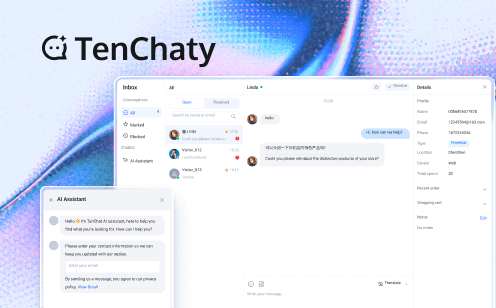
Introduction
Imagine seamlessly integrating your app's calling features with the native iOS calling experience. That's where CallKit comes into play. In the realm of iOS app development, CallKit holds significant importance as it bridges the gap between third-party apps and the system's native calling interface, providing a more consistent and user-friendly experience. The purpose of this article is to offer a comprehensive understanding of CallKit for developers and tech enthusiasts alike.
What is CallKit?
CallKit is a framework provided by Apple that enables developers to integrate their VoIP (Voice over Internet Protocol) or other calling services with the native iOS calling UI. It was introduced within Apple's ecosystem to enhance the way users interact with calling features in apps. Over time, it has become an essential component in current iOS app development, allowing apps to blend in smoothly with the overall iOS look and feel, rather than having a disjointed, separate calling interface.
How Does CallKit Work?
1. Explanation of basic principles and architecture
At its core, CallKit works by providing a set of APIs that allow apps to communicate with the iOS system's call handling mechanisms. It enables apps to register their calling services, handle call states (like incoming, outgoing, on hold, etc.), and present calls in a way that mimics the native iOS calls.
2. Key components and APIs of CallKit
Some of the key APIs include CXProvider, which is used to set up and manage the calling service, and CXCallController, which controls the call actions. There are also APIs for handling call directory and blocking unwanted calls.
3. Technical flowchart of CallKit integration
First, the app initializes the CXProvider, then registers it with the system. When a call is initiated or received, the appropriate callbacks are triggered, and the app can use the CXCallController to perform actions like answering, declining, or putting the call on hold. This flow ensures that the call is managed in harmony with the native iOS call handling.
4. Simple analogies or examples to aid understanding
Think of CallKit as a translator between your app's calling features and the iOS system. Just as a translator helps two people speaking different languages communicate effectively, CallKit helps your app's calls communicate smoothly with the iOS interface that users are already familiar with.

Applications and Use Cases
1. Main application areas
CallKit is widely used in VoIP apps to make the calling experience more native-like. Messaging apps also utilize it when they incorporate voice or video calling features. For example, it allows users to receive calls even when the app is in the background or not actively in use, just like a regular phone call.
2. Specific usage scenario examples
Suppose you're using a VoIP app to make a business call. With CallKit, the incoming call appears on your lock screen or as a banner notification, just like a traditional phone call would. You can answer or decline it with the same ease, without having to fumble through the app's interface.
3. Industry case analysis
Take Skype and WhatsApp as examples. When they integrated CallKit, users noticed a significant improvement in the calling experience. Calls felt more seamless and integrated with the iOS system, leading to increased usage and better user satisfaction.
Advantages and Benefits
1. List of main advantages
One of the main advantages is the native iOS integration. It makes the app's calls look and feel like they're part of the system, providing a consistent user experience. This consistency leads to less confusion for users and higher adoption rates. Additionally, it allows for better background handling of calls, ensuring that users don't miss important calls even when they're using other apps.
2. Comparison with traditional VoIP implementations
Traditional VoIP apps often had their own separate interfaces for handling calls, which could be jarring for users. CallKit eliminates this issue by integrating with the native UI. Also, in terms of call management, CallKit provides more efficient ways to handle call states compared to some older VoIP implementations.
3. Potential long-term impacts on app user engagement and retention
By providing a seamless calling experience, apps that use CallKit are more likely to keep users engaged. Users are less likely to abandon an app due to a poor or inconsistent calling interface. This can lead to higher retention rates and ultimately, better success for the app in the long run.
Challenges and Limitations
1. Current technical challenges in implementation
One challenge is ensuring proper compatibility with different iOS versions. Sometimes, changes in the iOS system can affect how CallKit functions, and developers need to stay updated to make sure their integrations work smoothly. Also, handling complex call scenarios, like conference calls with multiple participants, can be technically demanding.
2. Potential problems
Privacy concerns are always a consideration. Since CallKit integrates with the native system, developers need to ensure that user data related to calls is handled securely. There are also background execution limits that can affect how long an app can continue to manage calls in the background, which might impact certain features.
3. Limitations and areas for improvement
Currently, there might be limitations in terms of the customization options available for the call UI. While it aims to be consistent with the native look, some developers might want more flexibility to brand or style their call interfaces. Also, the integration process could be made simpler for developers with less technical expertise.
Future Trends and Developments
1. Predictions of CallKit's evolution
It's likely that CallKit will continue to expand its capabilities, perhaps integrating more closely with other iOS features like Siri for voice-controlled calling. There could also be enhancements in handling different types of media during calls, such as better support for sharing documents or screens.
2. Potential breakthrough advancements in iOS calling integration
We might see more seamless transitions between different types of calls, like switching from a voice call to a video call with just a tap. Also, improved integration with cross-platform calling could be on the horizon, allowing for more fluid communication between iOS and other operating systems.
3. Long-term impact on the VoIP and messaging app industry
As CallKit evolves, it will drive the industry to focus more on user experience and seamless integration. Apps that don't adopt or keep up with these advancements may fall behind in terms of user adoption and satisfaction.
Quickly Integrate Tencent RTC's Callkit in Your Application
After learning about the many aspects of CallKit, I'm sure you're ready to give it a try! Now it's time to get hands-on, with a detailed guide to quickly integrate CallKit into your apps for efficient, native call integration.I will guide you through the quick integration of the TUICallKit component. You will complete several key steps within 10 minutes, ultimately obtaining a video call feature with a complete UI interface.
Environment Preparations
Xcode 13 or later.
iOS 13.0 or later.
CocoaPods environment installation, Click to view.
Step 1. Activate the service
Refer to Activate the Service to obtain SDKAppID, SDKSecretKey, which will be used as Mandatory Parameters in Step 4: Log in to the TUICallKit component.
Step 2. Import the component
Use CocoaPods to import the component. If you encounter any issues, please refer to Environment Preparation first. Detailed steps for importing the component are as follows:
1. Please add the dependency pod 'TUICallKit_Swift' to your Podfile. If you encounter any problems, please refer to the Example project.
target 'xxxx' do
...
pod 'TUICallKit_Swift/Professional'
end2. In Terminal, first cd into the Podfile directory and then run the following command to install components.
pod installStep 3: Configure the Project
To use audio and video features, you need to authorize the usage of the camera and microphone. Please set the required permissions according to the actual needs of the project.
1. In Xcode, select TARGETS > Info > Custom iOS Target Properties" from the menu.
2. Click the + button to add camera and microphone permissions.
Privacy - Camera Usage DescriptionPrivacy - Microphone Usage Description
Step 4: Log in to the TUICallKit component
Add the following code to your project. It works by calling the relevant interfaces in TUICore to complete the login to TUI Component. This step is very important, only after successfully logging in, you can normally use the features offered by TUICallKit.
import TUICore
import TUICallKit_Swift
func application(_ application: UIApplication, didFinishLaunchingWithOptions launchOptions: [UIApplication.LaunchOptionsKey: Any]?) -> Bool {
let userID = "denny" // Please replace with your UserId
let sdkAppID: Int32 = 0 // Please replace with the SDKAppID obtained from the console in the step 1
let secretKey = "****" // Please replace with the SecretKey obtained from the console in the step 1
let userSig = GenerateTestUserSig.genTestUserSig(userID: userID, sdkAppID: sdkAppID, secretKey: secretKey)
TUILogin.login(sdkAppID, userID: userID, userSig: userSig) {
print("login success")
} fail: { code, message in
print("login failed, code: \(code), error: \(message ?? "nil")")
}
return true
}| Parameter | Type | Description |
| userID | String | Your own User ID based on your business. It can only include letters (a-z, A-Z), digits (0-9), underscores, and hyphens. |
| sdkAppID | Int32 | The unique identifier SDKAppID for the audio and video application created in Tencent RTC Console. |
| secretKey | String | SDKSecretKey for the audio and video application created in Tencent RTC Console. |
| userSig | String | A security signature for user login to verify identity and prevent unauthorized access to cloud services. |
Step Five: Make your first call
By calling the call function of TUICallKit and specifying the call type and callee's userId, you can initiate an audio or video call.
import TUICallKit_Swift
import TUICallEngine
// Initiating a 1-to-1 audio call (assuming userId is mike)
TUICallKit.createInstance().call(userId: "mike", callMediaType: .audio)ConclusionIf you have problems with the integration, you can solve your problems with our documentation.
Conclusion
In summary, CallKit is a crucial framework in iOS app development that enables apps to integrate their calling features with the native iOS calling experience. Its importance lies in providing a consistent and user-friendly interface for users, enhancing the overall calling experience. We encourage developers to explore CallKit integration in their apps to stay competitive and offer the best possible experience to their users.
FAQs
1. Is CallKit available on all iOS devices?
CallKit is available on most iOS devices running a compatible version of iOS. However, it depends on the device's hardware and software capabilities. Generally, newer iOS devices support it well, but older ones might have limitations.
2. Can CallKit be used for video calls?
Yes, CallKit can be used for video calls. It allows apps to integrate video calling features in a way that is consistent with the native iOS video call interface.
3. How does CallKit handle user privacy?CallKit adheres to Apple's strict privacy policies. It ensures that user data related to calls, such as call logs and contact information, is handled securely and only used in accordance with the app's permissions and the user's consent.
4. Is CallKit compatible with cross-platform development frameworks?
Currently, CallKit is designed specifically for iOS apps. While there may be ways to work around and integrate with some cross-platform frameworks to an extent, it's not natively designed for seamless cross-platform use. However, efforts are being made to improve its compatibility in the future.
If you have any questions or need assistance online, our support team is always ready to help. Please feel free to Contact us or join us on Telegram or Discord.


